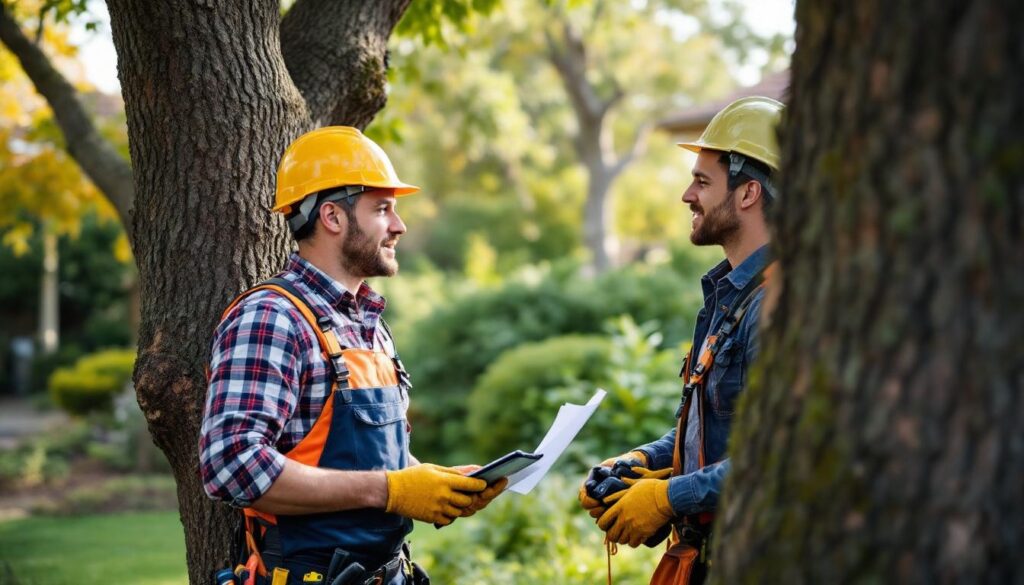Newtown Buyers Agent Why Creative Buyers Turn to Local Advocates
Understanding the Role of Buyers Agents in Newtown and Their Importance for Creative Buyers
A Newtown buyers agent is someone who works solely for property buyers, representing their interests throughout the entire buying process. These local property advocates take care of everything from searching for properties to finalizing the sale, always putting the buyer’s goals first.
How Local Knowledge Makes a Difference
In Newtown’s ever-changing market, having local knowledge can greatly enhance the experience of buying a property. A buyers agency Newtown with strong connections in the community understands what makes this suburb unique — from its artistic vibe to its evolving architectural style. This expertise enables them to find properties that perfectly match a buyer’s lifestyle and investment goals.
Why Creative Buyers Choose Local Advocates
Creative buyers are drawn to local advocates for several convincing reasons:
- Access to off-market properties: Through established professional networks, buyers agents can offer exclusive opportunities that are not publicly listed.
- Personalized strategies: Unlike traditional buyers who may follow a cookie-cutter approach, creative buyers often have specific needs and preferences that require tailored solutions.
- Understanding of neighborhood dynamics: A knowledgeable buyers agent will have insights into different areas within Newtown, including factors such as school districts, transport links, and upcoming developments.
- Objective decision-making: Buying a property can be an emotional process, but having an experienced advocate by your side can help keep your decisions rational and strategic.
The Advantage of Specialized Local Insights
The value proposition offered by buyers agents lies in their ability to provide specialized local insights that generic real estate services cannot replicate. For example:
- A Newtown-focused buyers agent knows which streets offer the best value for money based on recent sales data and market trends.
- They understand zoning regulations and how they may impact future development plans in certain areas.
- They have an eye for spotting potential where others might see only a rundown property or an outdated design.
This hyperlocal approach is crucial for buyers who are looking for properties with creative potential or distinctive features in one of Sydney’s most desirable inner-city suburbs.
How Newtown Buyers Agents Are Different From Traditional Real Estate Agents
Newtown buyers agents work exclusively for purchasers, never representing sellers or managing listings. This fundamental difference eliminates the conflict of interest present when traditional agents attempt to serve both parties in a transaction.
Traditional real estate agents earn commissions from vendors, creating an inherent incentive to achieve the highest possible sale price. Buyers agents flip this dynamic entirely, dedicating their expertise and negotiation skills solely to securing favorable outcomes for purchasers. Their fees come directly from buyers, aligning interests completely.
The local knowledge these specialists possess extends far beyond property values. They understand Newtown’s evolving arts scene, the best cafes on King Street, which blocks have the strongest community spirit, and how development applications might affect specific streets. This intimate familiarity with Inner West culture informs every recommendation.
Buyer-exclusive services include:
- Accessing properties before public listings
- Understanding which sellers might accept creative offers
- Knowing local tradespeople for pre-purchase assessments
A Newtown buyers agent’s professional network spans decades of community involvement—relationships with local solicitors, building inspectors, and other property professionals who share the same commitment to the area.
This deep-rooted presence transforms property searches from transactional exercises into strategic partnerships backed by authentic neighborhood expertise.

What Are the Advantages for Creative Buyers When They Choose Local Advocates in Newtown?
Creative buyers gain immediate access to off-market properties and exclusive opportunities that never reach public listings. Local advocates in Newtown maintain extensive professional networks with developers, investors, and other agents who share opportunities before they hit the market.
The tailored advice these advocates provide addresses the specific requirements of creative buyers—whether searching for warehouse conversions with studio potential, heritage homes suitable for renovation, or properties in emerging pockets of the Inner West. Local advocates understand that creative buyers often have non-traditional criteria and work to match properties with individual visions rather than applying cookie-cutter approaches.
Creative strategies in competitive markets become essential tools when multiple buyers target the same property. These strategies include:
- Structuring unconventional offers that appeal to specific seller motivations
- Timing inspections and bids to maximize advantage
- Identifying properties with hidden potential that other buyers overlook
- Crafting compelling buyer profiles that resonate with vendors
The local advocates benefits extend beyond simple property matching. They interpret neighborhood micro-trends, recognize which streets are gaining creative communities, and spot properties before gentrification drives prices higher. This insider perspective helps creative buyers position themselves strategically in markets where timing and knowledge determine success.
How Do Buyers Agents Alleviate Stress and Save Time for Their Clients?
Does property hunting feel overwhelming and time-consuming? A Newtown buyers agent handles every stage from initial search through to settlement, eliminating the burden of managing complex transactions alone. They coordinate inspections, liaise with solicitors, arrange building reports, and oversee contract negotiations while you maintain focus on your daily life.
How do agents prevent property search fatigue? By pre-screening listings against your specific criteria, buyers agents present only genuinely suitable options. This filtering process cuts through hundreds of irrelevant properties that would otherwise consume your weekends and mental energy. You view fewer homes but with higher conversion potential.
The stress reduction in buying property becomes particularly evident during emotional moments. When attachment to a particular home clouds judgment, your agent provides objective analysis of true market value and potential issues. This professional distance protects you from overpaying or overlooking red flags that emotion might hide.
What makes time-saving buyers agents especially valuable? Their established systems and industry connections accelerate every step. While independent buyers spend months learning market nuances, agents apply existing expertise immediately. They know which conveyancers work efficiently, which inspectors provide thorough reports, and which lenders offer competitive rates—knowledge that would take considerable time to acquire independently.
What Unique Skills and Knowledge Do Newtown Buyers Agents Bring to Benefit Their Clients?
Newtown buyers agents possess negotiation skills that consistently secure better purchase prices and favorable contract terms for their clients. These professionals understand seller psychology and market dynamics, allowing them to craft compelling offers that stand out without overpaying. Their experience in handling multiple transactions means they know exactly when to push harder and when to hold back during price discussions.
Property value identification represents another critical expertise area where local advocates excel. Agents with deep market insights Newtown can spot undervalued properties that other buyers overlook—whether it’s a warehouse conversion with untapped potential or a terrace house in an emerging pocket of the suburb. They recognize architectural features, zoning opportunities, and renovation possibilities that translate into future value.
Strategic guidance rooted in market insights Newtown helps buyers make informed decisions aligned with both current conditions and long-term trends. Local agents track:
- Seasonal price fluctuations specific to Inner West neighborhoods
- Emerging lifestyle shifts affecting property demand
- Infrastructure developments impacting future growth
- Neighborhood character evolution and gentrification patterns
This combination of sharp negotiation abilities, value-spotting expertise, and strategic market knowledge creates a powerful advantage for buyers navigating Newtown’s distinctive property landscape. The benefits of a buyers agent extend beyond just securing a good deal; they also provide invaluable support throughout the entire buying process, ensuring a smoother and more successful property acquisition experience.
How Local Advocates Help Buyers Overcome Challenges in a Competitive Market
Local advocates turn high-pressure situations into manageable opportunities by using strategies for competitive real estate markets that give buyers an advantage. When multiple parties are interested in the same property, these agents use tactical approaches to position their clients favorably without going over budget.
1. Handling Bidding Wars with Precision
Dealing with bidding wars requires more than just excitement—it requires careful planning. Buyer agents look at similar sales data, determine the true value of the property, and set clear limits on how much they are willing to bid before the auction starts. They pay attention to the dynamics of the room, know when to hold back, and understand when to make strategic moves that will discourage other bidders.
2. Using Insider Knowledge in Newtown
In Newtown, local advocates have access to properties before they are widely listed. They have connections with selling agents, developers, and property owners who share opportunities within their networks. This early information allows buyers to inspect and make offers before competition becomes fierce, often resulting in properties being sold at more reasonable prices.
3. Finding Creative Solutions for Difficult Situations
When traditional methods don’t work, buyer agents come up with innovative solutions. They create offers that go beyond just price—such as flexible settlement terms, rent-back arrangements, or personal letters to sellers—that appeal to sellers on a deeper level. They also identify properties that need cosmetic updates and may not attract other buyers, presenting opportunities where there is little competition but high potential.
4. Staying Informed about Market Changes
These agents keep a close eye on daily market changes, understanding when certain suburbs become popular or less desirable. This knowledge allows clients to make confident decisions during the best times to buy.
Local advocates not only assist buyers in navigating these challenges but also instill confidence through their expertise. They act as a guiding force, much like a leader who successfully leads a group to achieve a difficult goal, ensuring that their clients secure their dream homes even in the most competitive markets.
Why Is It Beneficial for a Buyers Agent in Newtown to Have Strong Community Connections?
Can deep community ties really make a difference in property buying? A Newtown buyers agent with strong local connections understands the nuanced cultural fabric that makes each Inner West pocket distinct. They recognize which streets attract artists and musicians, where young families cluster, and how proximity to live music venues or vintage shops influences property desirability.
These community connection real estate professionals attend local events, shop at neighborhood markets, and maintain relationships with longtime residents. This immersion provides authentic insights into lifestyle factors that property listings never capture—like which cafes serve as community hubs or how street parking patterns shift throughout the week.
Building trust through established reputation creates advantages standard agents can’t replicate. Local advocates often know:
- Property managers who hear about rentals turning into sales
- Architects familiar with renovation potential in heritage areas
- Council contacts who understand zoning changes affecting future development
Their neighborhood knowledge Inner West extends beyond property data to encompass school catchments, noise patterns, and upcoming infrastructure projects that impact value.
Buyers gain confidence when their agent shares firsthand experience living or working in the area. This authenticity helps creative buyers envision their future lifestyle rather than just purchasing square meters. The agent’s embedded position in the community transforms property search from transactional to deeply informed guidance.
See Also : Why a Local Buyers Agent Sydney Is Your Advantage in a Competitive Market
Are You Ready to Work With a Trusted Property Partner in Newtown?
Can a local advocate transform your property search experience? Creative buyers who partner with trusted property partners Newtown gain immediate access to insider knowledge, off-market opportunities, and strategic guidance tailored to their unique vision.
Dedicated advocacy buyers agents work exclusively in your interest, removing the stress and emotional weight from one of life’s biggest decisions. They understand that finding the right property in Newtown requires more than just browsing listings—it demands deep community insight, skilled negotiation, and creative problem-solving.
The reason why creative buyers turn to local advocates instead of generic services is clear when you see the difference in expertise. Your property journey deserves a partner who knows every street, understands market nuances, and fights for your best outcome at every step.
Newtown Buyers Agent Why Creative Buyers Turn to Local Advocates Read More »






